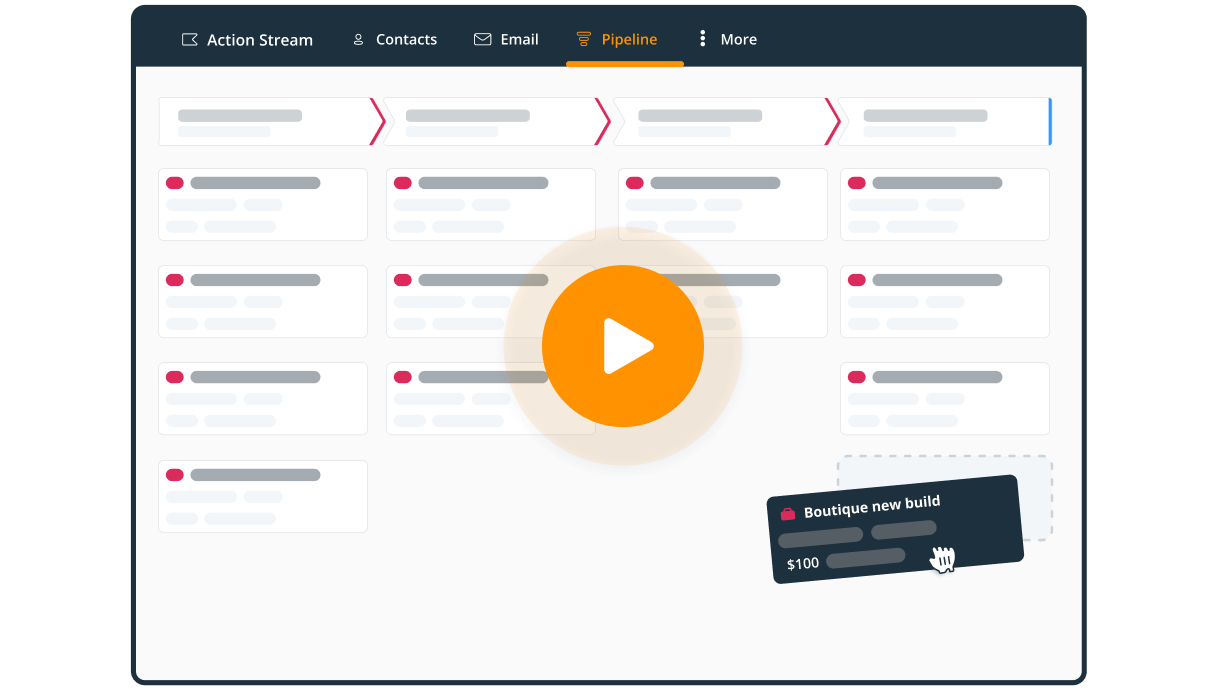
Relationship selling: Why it pays off to be human in sales

Transactional sales are no longer working. Your customers don’t want to be sold to. They want you to meet their needs.
Relationship selling is just about that.
It shifts your mindset from delivering a sales pitch to enabling a dialogue. It fosters trust and collaboration without making your customers feel like you’re in it only for transactions and paychecks.
In this post, we’ll dive into the nuances of relationship selling to explore its benefits, challenges, and techniques.
What is relationship selling?
The customer has turned more into a person with a need, rather than a buyer—and salespeople have to follow along.
At its core, relationship selling stands on three pillars:
- Human-to-human sales. Walk into your customer’s world to recognize any needs, challenges, and goals they might have. In relationship selling, you prioritize your customer’s interests over making a sale, even if sometimes it means recommending an alternative solution.
- Listening. The key to selling isn’t speaking and what to say—it’s listening. When you listen, you get people to open up and start seeing opportunities where you can provide value instead of only sharing your product specs or service listings.
- Active engagement. The business relationship doesn’t end when the deal is signed. In fact, it only begins. Maintain an open dialogue and schedule regular check-ins—no ghosting is allowed in relationship selling!
The goal is to become a trusted adviser, not just a vendor. It’s a more consultative approach to sales, centered around relationships, not transactions.
The payoff is longer customer lifetime value and easier upsells.
Relationship selling vs. transactional selling
In a world full of automated emails, you can win by staying as human as possible.
The way of selling has changed, so it’s important that your sales process reflects this change too.
To really grasp relationship selling, let’s see how it differs from traditional transactional selling.
| Transactional Selling | Relationship Selling |
| Transaction-based and product-centric | Consultative and customer-centric |
| Focus on making a short-term sale | Focus on building a long-term partnership |
| Making a sales pitch right away | Asking questions and listening first |
| Interaction ends after closing | Interaction continues post-sale |
For example, a transactional salesperson may try to upsell you a pricey subscription plan that has more features that you might need in the future.
A relationship seller would first ensure you understand how to make the most out of your current pricing plan, provide training if needed, and only recommend add-ons if there’s a legitimate need.
The relationship approach is more customer-centric and focused on mutual success over just making a sale.
That’s why it’s often referred to as consultative selling.
3 main benefits of relationship selling
While relationship selling requires more patience and effort, the long-term rewards make it well worth it.
Here are some key benefits:
1. Higher customer lifetime value
The biggest profits come from nurturing existing customers, not constantly chasing new ones.
Customer acquisition is more costly than customer retention (up to 4-5 times, in fact).
Relationship selling focuses on creating long-lasting partnerships. Strong relationships make it easier to cross-sell, upsell, and retain customers over many years.
A great example is financial consultants who get to understand their clients’ lives and needs so well that they end up managing their wealth over decades, rather than being a once-off adviser.
2. Positive word-of-mouth
It’s no secret that referrals are the main revenue source for small businesses. Besides, customers who come via word-of-mouth marketing are much more likely to convert. You’ve probably also noticed this in your business.
People love to rave about companies that provide an exceptional experience (it is still quite rare despite how often we talk about this).
Relationship selling prioritizes going the extra mile.
Think of a general contractor whose clients are so delighted, they keep sending friends and family their way. That’s a great example of having repeat business without investing too much into expensive ads.
3. Increased customer loyalty
In relationship selling, you aren’t just making a sale, you’re making an investment in the client’s long-term success.
For example, an auto mechanic who takes the time to educate their customers on machine maintenance and only recommends necessary repairs will see more clients coming back because they feel they can trust the advice.
Customers tend to stay loyal to companies and salespeople who have their best interests at heart, even when lower prices or flashier alternatives come along.
If your customers view you as their trusted adviser, they are far less likely to jump ship for minor discounts.
The relationships you built are invaluable.
4 challenges of relationship selling (and how to overcome them)
While the benefits of relationship selling are clear, successfully implementing it comes with a few challenges.
If it was easy, every company in the world would be doing it. But this is not always the case.
Let’s look at some of the biggest hurdles in relationship selling and how to overcome them:
1. Longer sales cycles
There’s no way of hiding the most obvious shortcoming of the relationship selling approach: it leads to longer sales cycles.
Building trust takes time. Sometimes a lot of time! Unfortunately (or rather, fortunately), there’s no shortcut to meaningful relationships.
If you’re doing transactional sales, you can get a deal signed in days or weeks, while relationship selling may take a few months of courtship.
2. Need for deeper expertise
You can’t become a trusted adviser without developing in-depth product/industry knowledge. This requires continuous learning outside of your sales skills.
It can be frustrating at times because you might not see the immediate benefits.
After all, you decided to have a career in sales, why would you spend so much time on something else?
3. Pressure from sales targets
Sales teams are often judged on short-term sales targets and KPIs.
This makes prioritizing long-term relationships difficult.
4. Scaling relationships
Can you maintain the same connection when your business starts growing?
This question might be constantly playing on your mind.
Managing dozens or hundreds of unique relationships can become overwhelming without systemization.
5 techniques for relationship selling
Relationship selling requires a specific mindset and skills.
Beyond just being friendly, there are nuanced techniques that allow you to connect with clients.
Here are some must-haves:
1. Work on your communication skills
Don’t just take the stated requirements at face value. Ask insightful questions that go beyond the surface level. This will help you uncover unconsidered needs.
Instead of asking “What marketing tools are you using?”, go with “What are your top marketing priorities and roadblocks this year?”
Your customers can notice it from a mile away if you’re just waiting to pitch. Lean in and practice active listening.
2. Give first, take later
Position yourself as a helpful expert—not just a seller. Provide free advice and recommendations tailored to your customer’s business.
For example, if your company has a very detailed contract with a lot of nuances, share some tips and best practices of how the prospect can make sure they understand all the ins and outs of the contract.
Rather than showcasing your features and achievements, quantify the unique value you’ll create for this client.
3. Keep in touch
Being consistent means being remembered.
Schedule through regular check-ins, centered around your customer’s agenda. These little touches solidify your commitment and show that you care.
For example, you can send your customers a note when each time they win an award or hit some milestone. Wishing them a happy birthday can also be a nice thing to do.
Learn more about the next action selling principle and how it can be coupled up with relationship selling.
4. Know when it’s time to stop
Yes, sales are a number game and persistence does pay off.
But in relationship selling, building a long-term connection should be at the forefront of every interaction you have.
That’s where empathy is important. Recognize when your customer is a little bit stressed with all your prospecting questions, stop and offer them an email instead.
Pay attention to the signals for when it’s ok or not ok to continue speaking.
5. Stay personal, not just personalized
Write very personal emails. AI-generated emails won’t cut in relationship selling.
Having templates and call scripts is great but in reality, every prospect is unique. So you’ll end up constantly tweaking them and improving as you go.
4 most common misconceptions about relationship selling
Relationship selling is a powerful approach, but it’s often misunderstood.
Let’s clear up some of the biggest misconceptions.
1. “Being friendly won’t close deals”
Relationship selling goes far deeper than just smiling and making small talk. It’s about becoming a trusted adviser and understanding your client’s business inside and out.
It takes significant effort to add value, challenge assumptions, and drive your client toward success.
2. “It’s neither scalable nor measurable”
Relationship selling is different from the traditional transactional approach… which means that it requires a different set of systems and metrics.
It can be standardized and quantified. Depending on your business model, you can use contact frequency, referrals, LTV, and many other numbers as your KPIs.
3. “You have to make calls, emails won’t do”
There’s nothing wrong with using emails. But you need to use them in the right way.
When you’re able to personalize your outreach messages, people have the ability to read them in their own time.
At some point, you’ll need to meet with the prospect in person or via a video call but it’s okay to use emails too. Don’t discredit their power.
4. “Rejections mean you’re doing it wrong”
Even if you put a lot of effort into building a relationship with a prospect, it won’t always work out. We often take rejections too close to our hearts.
It doesn’t necessarily mean that your approach is wrong. You can learn from it. Even when someone doesn’t convert, reflecting on your experience is still important.
If someone gets back to you and says no, ask for some feedback: “Hey, thanks for getting back to me! I’d love to know why as we’re always trying to improve this solution.”
The importance of building relationships in sales
At first glance, relationship selling might look time-consuming, but if the time spent results in improved conversion rate—it must be worth it, right?
At the end of the day, your customers and prospects want to know you actually care about them—not just looking to make a sale. They need to feel you have their best interests at heart.
Show them that their success is really important to you. Then you’ll have an easier time upselling, cross-selling, and winning over new customers.








